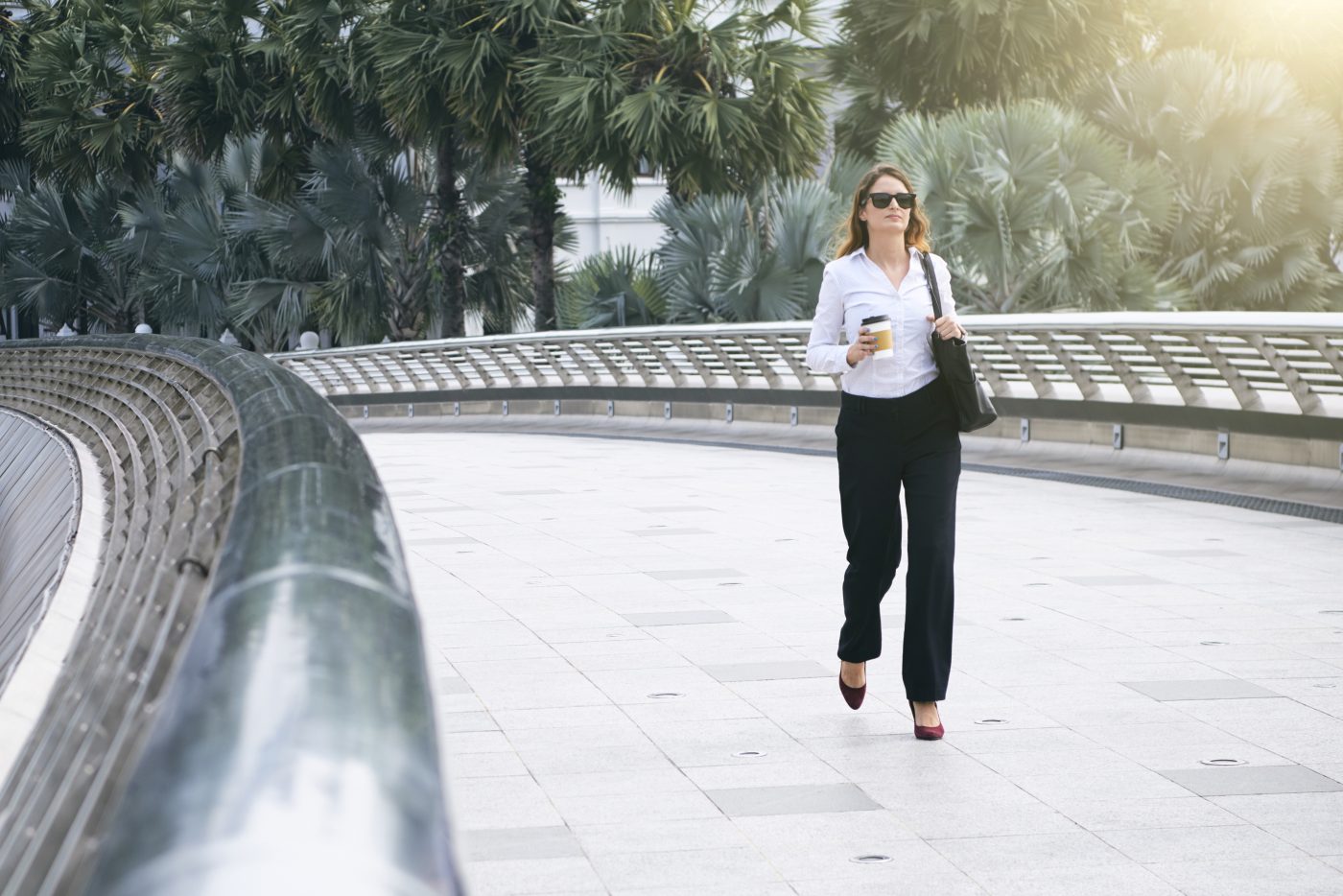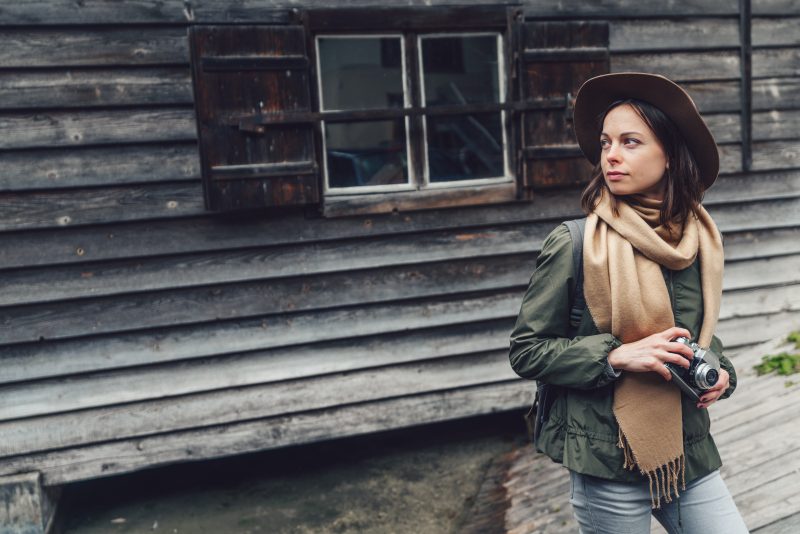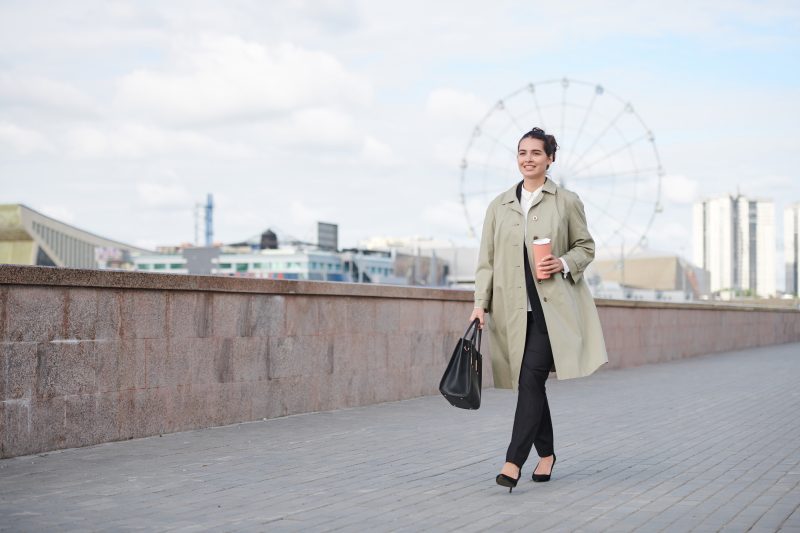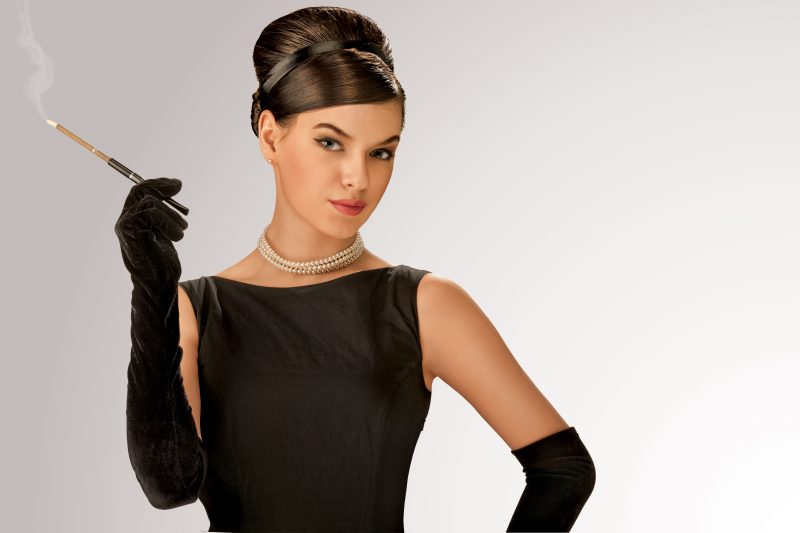Let’s talk about the cursed phrase “business casual” for a minute. Is there any term in the fashion lexicon more frustratingly vague yet simultaneously restrictive? It’s the sartorial equivalent of being told to “have fun, but not too much fun” at a work happy hour. Every time I get an invitation with “business casual attire” on it, I have the same existential crisis in front of my closet. Too formal and you look like you’re confused about the dress code; too casual and suddenly you’re the person who “doesn’t take things seriously enough.” It’s a trap designed to make us all waste precious morning minutes second-guessing ourselves.
I had this very crisis last month when I was invited to speak on a panel about sustainable fashion at a conference where the dress code was—you guessed it—business casual. After trying on approximately 37 different combinations and sending emergency mirror selfies to my most honest friend Emma (who responded to one particularly uninspired blazer-and-pants combo with “you look like you’re about to try to sell me term life insurance”), I realized the issue wasn’t the individual pieces in my wardrobe. It was that I was approaching business casual as a restriction rather than a creative framework.
The outfit I finally landed on—a vintage men’s pinstripe vest worn as a top, wide-leg jeans in a dark raw denim, and pointed leather mules—prompted three separate attendees to ask where I’d gotten my “amazing suit alternative.” It hit that business casual sweet spot: polished enough for a professional context but interesting enough that I actually enjoyed wearing it. More importantly, it felt like me, not like some corporate costume I was reluctantly donning.
That experience sent me down a rabbit hole of reconsidering business casual entirely.
I spent the past few weeks talking to stylists, creative professionals, and office workers about how they’ve managed to make business casual actually exciting while still keeping their jobs. The consensus? There’s a formula—or rather, an anti-formula—that works across different body types, gender presentations, and office environments.
The breakthrough came from a conversation with Lena, a creative director at an advertising agency who somehow always looks both completely professional and like she just walked off a street style blog. “The trick is understanding the psychology behind business casual,” she explained, while wearing what appeared to be a structured ball gown skirt paired with a perfectly broken-in vintage t-shirt and architectural blazer. “It’s not actually about specific items—it’s about balancing structure with flexibility, formality with approachability.”
Her approach, which I’ve seen echoed by other genuinely stylish professionals: pair one undeniably “business” piece with one unexpectedly casual piece, then add a third element that’s somewhere in the middle. The formula creates tension that makes an outfit interesting while still reading as intentional rather than confused.
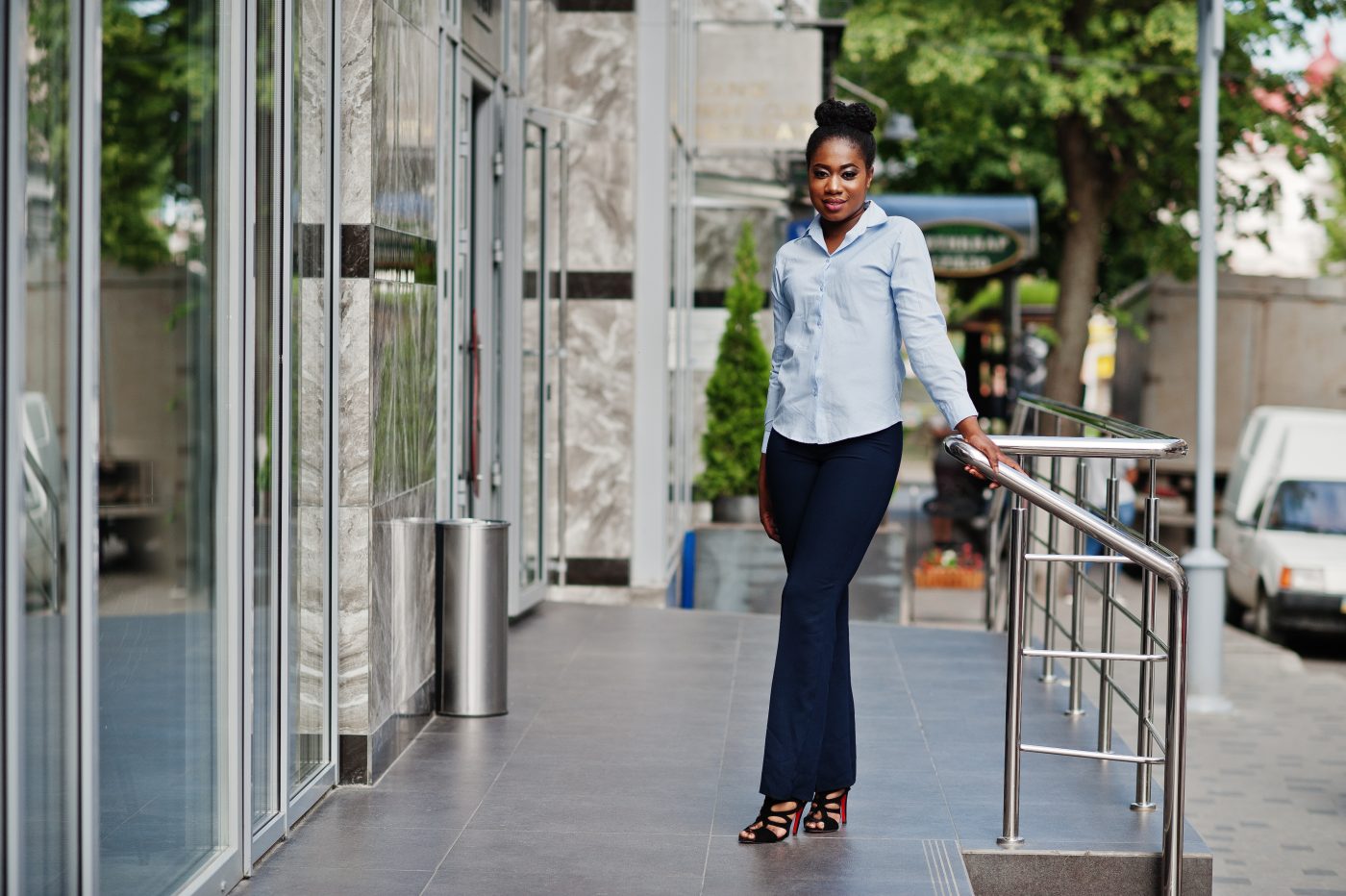
Let me break this down with some specific combinations that follow this principle:
My personal go-to lately has been the structured vest + unexpected bottom + polished shoe equation. That vintage pinstripe vest obviously reads “business,” while dark wide-leg jeans push slightly into casual territory without going full weekend mode. The pointed leather mule splits the difference. I’ve worn variations on this theme repeatedly—swapping in a leather vest with slim wool trousers, or a suit vest with a midi skirt. The proportions create interest while the business element keeps it professional.
Another winning combination comes from Marcus, an architect whose office style I’ve admired for years: the classic button-down + unexpected trouser + statement accessory formula. His version involves oversized oxford shirts (the business element) paired with drawstring wool trousers that look like tailored pants but have the comfort of sweatpants (the unexpected casual twist). The architectural watch or unique eyeglasses provide the third element that elevates the whole look. I’ve adapted this formula with a crisp white button-down, wide-leg linen pants with a drawstring waist, and chunky vintage jewelry.
For those who enjoy dresses, Aisha, a financial analyst with an enviable work wardrobe, swears by the “business dress + casual jacket + intentional shoe” approach. She takes simple sheath dresses or shirt dresses (business) and layers them with denim jackets or field jackets (unexpected casual), then adds back professionalism with a refined shoe. “The dress signals I understand the environment, but the jacket says I’m not just another corporate clone,” she explained. The result is polished but with personality.
Then there’s what I call the high-low hybrid piece strategy, demonstrated perfectly by Jordan, a museum curator who always looks effortlessly cool: finding single items that combine business and casual elements inherently. Think sweater blazers, knit midi dresses with tailored elements, structured tops in t-shirt materials, or suits in unexpected fabrics like corduroy or linen. These pieces do the work of balancing formality and approachability within themselves, making the rest of your styling job easier.
The color story approach offers another path, as shown by Theo, an editor whose monochromatic looks somehow never read as boring: using traditionally business colors (navy, gray, black, camel) but in decidedly non-business silhouettes, or taking traditionally casual silhouettes but executing them in refined fabrics and colors. His signature look involves head-to-toe navy (traditionally business) but in relaxed, almost pajama-like silhouettes (decidedly casual), with immaculate tailoring being the element that ties it all together.
What all these approaches have in common is intentional tension—they’re not trying to hit some middle ground of blandness where nothing reads as too businesslike or too casual. Instead, they deliberately include elements from both ends of the spectrum, creating interest through contrast while still maintaining an overall sense of appropriateness.
This explains why so many business casual attempts fall flat: they aim for the middle of the road with everything. The mid-formality pants with the mid-formality top with the mid-formality shoes creates an outfit that’s technically appropriate but visually forgettable and emotionally deflating to wear. No wonder so many people hate dressing for work.
Beyond the basic formula, the truly stylish business casual practitioners I observed were breaking several unspoken rules that keep most office wardrobes firmly in snoozeville:
First, they’re not limiting their “business” pieces to traditional suiting. Yes, blazers qualify, but so do vests, tailored dresses, button-downs, pencil skirts, and anything with structure and a degree of formality. Similarly, their “casual” elements aren’t limited to jeans—they include relaxed silhouettes, unexpected textures, comfort-oriented designs, and pieces with personality that wouldn’t appear in traditional office wear.
Second, they’re playing with proportions rather than sticking to conventional silhouettes. Oversized blazers over fitted tops. Wide-leg pants with structured jackets. Midi-length hemlines with cropped tops layered under blazers. The unexpected proportions create visual interest while the business elements maintain professionalism.
Third, they’re incorporating statement accessories strategically. Subtle for conventional offices, bolder for creative environments, but always present. The right accessory can pull together an outfit that might otherwise seem disjointed, signaling that the combination was intentional rather than confused. Think architectural jewelry, interesting eyewear, memorable shoes, or beautifully crafted bags.
Fourth—and this is critical—they’re ensuring impeccable fit, even for casual pieces. Nothing undermines an outfit faster than poor fit, regardless of how expensive or well-designed the individual items might be. Several people I spoke with emphasized the importance of building relationships with alterations specialists and budgeting for tailoring as part of their clothing expenses. Even jeans and t-shirts look refined when they fit perfectly.
Fifth, they’re considering the entire visual story from head to toe, rather than focusing on individual pieces. The most successful business casual outfits have a coherent point of view. They tell a story, whether that’s “creative professional with artistic sensibilities” or “traditionally minded but with an edge” or “elegant minimalist with unexpected details.” This holistic approach prevents the disjointed feeling that happens when outfits are constructed as just a collection of appropriate pieces.
The secret sixth rule that no one explicitly mentioned but I observed consistently: the most stylish business casual practitioners choose one element of conventional attractiveness to downplay or subvert. This creates the tension that makes an outfit interesting. Maybe it’s wearing deliberately flat shoes with an otherwise conventional outfit. Maybe it’s choosing an unconventional silhouette in traditional fabrics. Maybe it’s playing with gender-coded elements in unexpected ways. Whatever the specific choice, this deliberate subversion prevents the bland conventionality that makes so much business casual clothing soul-crushing to wear.
Of course, all this theory is useless without practical applications, so I’ve been experimenting with these principles in my own wardrobe. Some combinations that have worked particularly well:
A crisp white button-down with the sleeves rolled up, paired with vintage Levi’s 501s in a dark wash, leather loafers, and a woven leather belt. The oxford shirt reads business, the vintage jeans push casual, and the refined accessories bridge the gap. Simple but effective.
A black turtleneck bodysuit (professional) with wide-leg khaki cargo pants (unexpectedly casual) and pointed ankle boots (the defining third element). This combination has gotten compliments every time I’ve worn it, despite being incredibly simple and comfortable.
A pinstripe blazer (clearly business) over a vintage band t-shirt (decidedly not business) with a midi skirt and ankle boots. The contrast between the structured jacket and the lived-in tee creates exactly the kind of tension that makes an outfit interesting rather than forgettable.
A grey cashmere sweater with slouchy black trousers and chunky loafers, elevated with architectural silver jewelry. The sweater and trousers could read as conventional, but the proportions and substantial footwear keep it from business casual purgatory.
A shirt dress (business) worn unbuttoned over wide-leg jeans and a simple tank (casual), cinched with a statement belt (the elevating third element). This layered approach takes basic pieces and makes them feel intentional rather than last-minute.
What’s fascinating is how this same basic principle—business piece + casual piece + thoughtful third element—works across different personal styles, body types, and office environments. It’s less about specific items and more about the relationship between the elements in your outfit.
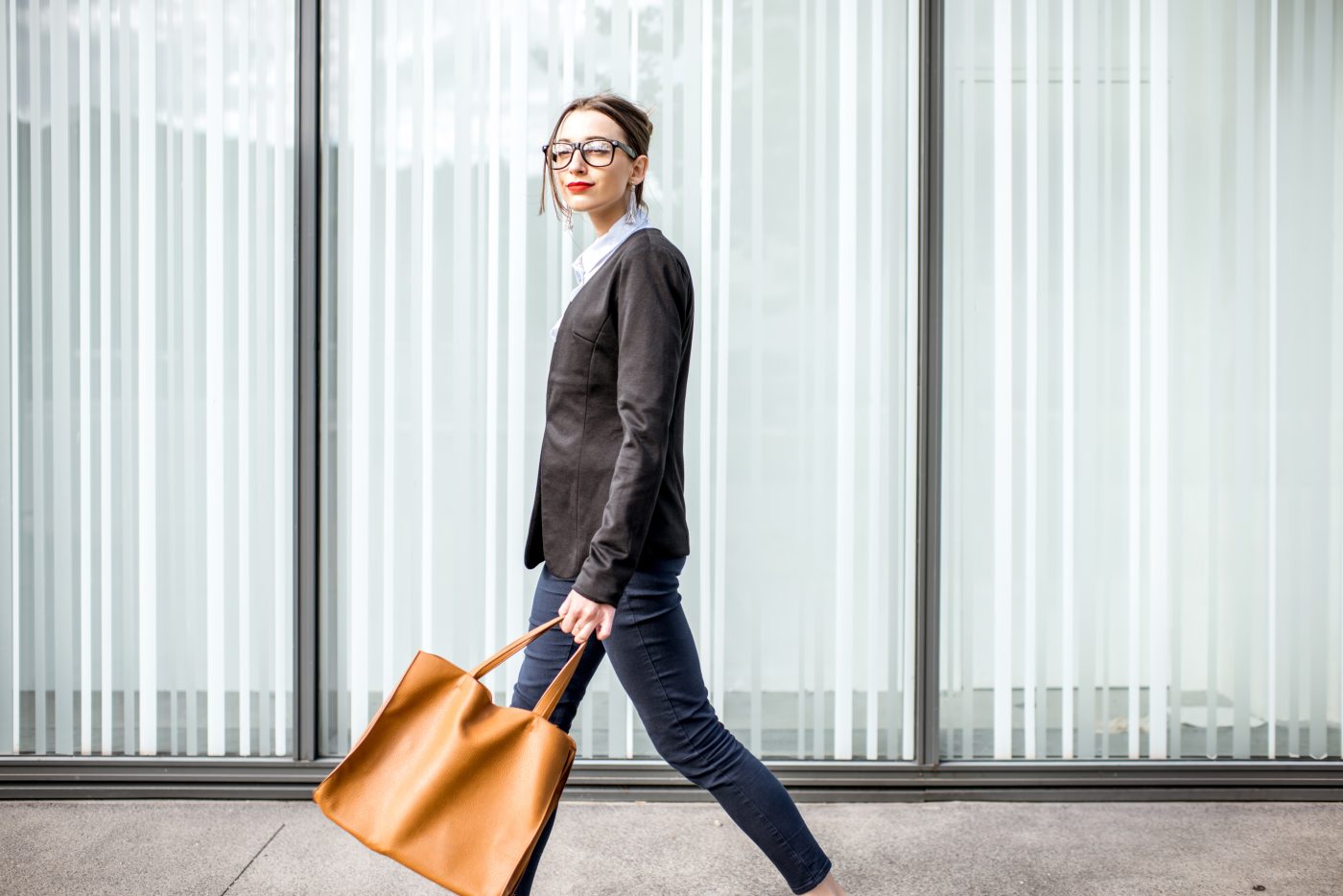
The most liberating insight from this research? There’s no single correct version of business casual. The colleagues, clients, and contacts who consistently look both appropriate AND interesting aren’t following some secret dress code manual. They’re playing with the balance between professional and personal, structure and ease, convention and subversion. Their outfits work not because they’ve found some mythical perfect business casual item, but because they understand the visual and social language of clothing in professional contexts.
This approach requires more thought than just reaching for the same rotation of “work appropriate” pieces, but the payoff is significant. Beyond the obvious benefit of actually enjoying what you wear (revolutionary concept, I know), there’s evidence that expressing your personality through clothing—while still respecting contextual norms—positively impacts how you’re perceived professionally.
Several studies have found that people who dress in ways that are appropriate but distinctive are rated higher on both competence AND creativity compared to those who dress in bland, forgettable approximations of professional attire. It’s the difference between thoughtfully engaging with the business casual framework versus reluctantly submitting to it.
I’m not suggesting you show up to your banking job in full avant-garde Rick Owens (though if your workplace would support that, more power to you).
But I am suggesting that the safest approach—aiming for the most forgettable, middle-of-the-road version of business casual—might actually be riskier for both your personal satisfaction and professional perception than thoughtfully incorporating elements that express your individual style.
The next time you’re standing in front of your closet having a business casual existential crisis, try this: Identify one clearly professional piece you actually enjoy wearing. Find one casual piece that makes you feel good. Add a third element that ties them together. Make sure everything fits impeccably. Then walk into your workplace with the confidence of someone who understood the assignment but completed it on your own terms.
And if anyone at the office compliments your outfit? Resist the urge to downplay it with “Oh, I just threw this together” (we all know that’s rarely true for good outfits). Instead, take the compliment as confirmation that maybe—just maybe—business casual doesn’t have to be a curse after all.
